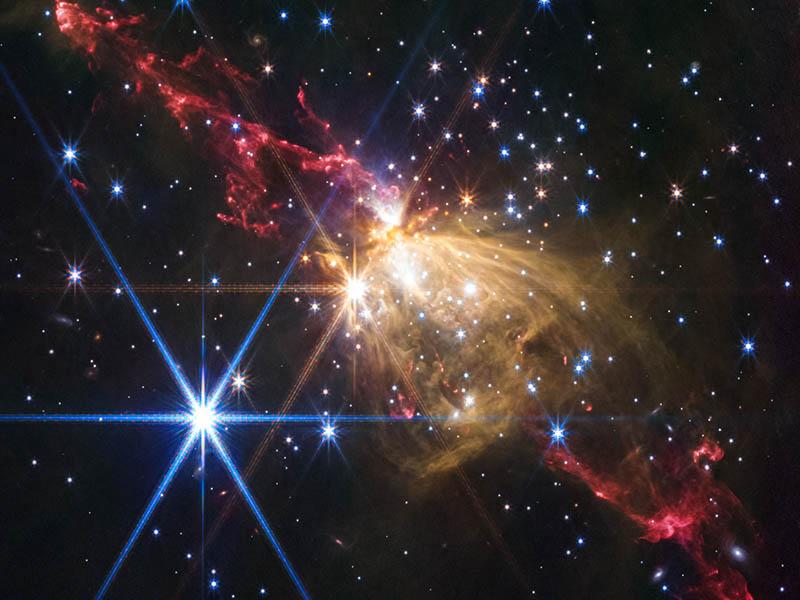UVA Astronomers Unlock Secret of Massive Star Formation with Webb Telescope

A massive stellar jet stretching across eight light-years has been captured by NASA’s James Webb Space Telescope, revealing new insights into how massive stars form. The discovery was led by University of Virginia alumnus Yu Cheng, who planned and proposed the observations while earning his Ph.D. in astronomy at UVA’s College and Graduate School of Arts & Sciences.
Cheng, now a postdoctoral fellow at the National Astronomical Observatory of Japan, is lead author of a new study published in The Astrophysical Journal. He and his collaborators used Webb’s infrared imaging to detect an enormous jet of plasma erupting from a young, massive star located about 15,000 light-years away in the Sharpless 2-284 star-forming region.
The outflow, traveling at hundreds of thousands of miles per hour, is roughly twice the distance between the Sun and Alpha Centauri, our nearest star system. Such jets are usually observed around stars much smaller than this one.
“We didn’t really know there was a massive star with this kind of super-jet out there before the observation,” Cheng said. “Such a spectacular outflow of molecular hydrogen from a massive star is rare in other regions of our galaxy.”
Jonathan Tan, a professor of astronomy at UVA and at Sweden’s Chalmers University of Technology in Sweden, played a central role in analyzing the discovery and developing new theoretical models of star formation to interpret Webb’s findings.
“I was really surprised at the order, symmetry, and size of the jet when we first looked at it,” Tan said.
The team’s work supports a leading theory of how massive stars form, known as core accretion. In this process, a relatively stable disk of gas and dust feeds material onto the growing star, while jets shoot outward along the star’s spin axis. Webb’s images showed the jets extending in near 180-degree opposition, which is evidence that the system has remained steady over its formation history.
“Once we found a massive star launching these jets, we realized we could use the Webb observations to test theories of massive star formation,” Tan said. “We developed new theoretical core accretion models that were fit to the data, to basically tell us what kind of star is in the center.”
The analysis suggests the central protostar is about 10 times the mass of the Sun and still growing. Its environment on the outer edge of the Milky Way, characterized by its low-metallicity (or low levels of heavy elements like carbon, oxygen, nitrogen and iron), offers a rare local analog to the conditions in the early universe, when these heavier elements were scarce.
Cheng said the finding shows how massive stars shape the galaxies they inhabit.
“Our discovery is shedding light on the formation mechanism of massive stars in low metallicity environments, so we can use this massive star as a laboratory to study what was going on in earlier cosmic history,” he said.
The study also used complementary data from the largest telescope in the world, the Atacama Large Millimeter Array in Chile, which revealed another dense stellar core that may represent an earlier stage of massive star formation. The finding suggests that where there’s one massive star, there could be others.
We’re here to answer your questions! Contact us today.







